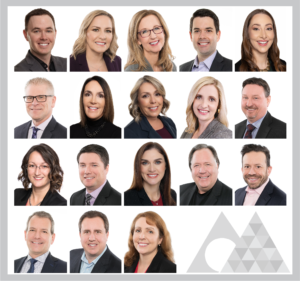Section 85 Tax Rollovers
Section 85 and Corporate Income Tax Planning
In this blog, we discuss methods and circumstances around using Section 85 Tax Rollovers, and provide examples of how this rollover would work.
A Section 85 Tax Rollover (“rollover”) is a term used to describe a special tax technique that allows a taxpayer to defer all or part of the income which would otherwise be incurred and taxed upon transfer of assets. In other words, it allows a taxpayer to defer paying taxes on assets transferred. This is especially useful for sole proprietorships looking to incorporate, or for transfers between Canadian corporations.
Through Section 85 of the Income Tax Act, certain types of eligible property can be transferred to a transferee corporation. Eligible property can include capital property, Canadian and foreign resource properties, some types of inventory, and some types of real estate.
When transferring eligible property through a Section 85 Tax Rollover, there are two key things to keep in mind:
- Although various forms of payment (“consideration”) are permissible by the transferee corporation, a portion of the consideration must be shares of the transferee corporation. This could consist of common shares, preference shares, or a combination of the two; and
- The fair market value of the transferred eligible property must equal the fair market value of the consideration paid by the transferee.
Although the transferor receives fair market value consideration for the property being transferred, tax deferrals can result because the transferor and the transferee jointly choose the “elected value” at which to transfer eligible property. This elected value must fall within specified ranges.
A Simple Example of “Elected Value”:
Consider Shelly’s dilemma. Five years ago, Shelly started a restaurant as a sole proprietorship. As the restaurant became quite successful and profitable, Shelly’s lawyer and tax advisor recommended she incorporate the business. Once she incorporates the new corporation, what are her options for transferring the personally-owned business assets into the corporation?
- Option A – sell the assets to the new corporation at fair market value, resulting in income taxes owing by Shelly on any resulting capital gains or recaptured capital cost allowance;
- Option B – gift the assets to the new corporation for an amount less than fair market value, resulting in both income taxes owing by Shelly (similar to Option A) and a future tax disadvantage to the new corporation under Section 69 of the Income Tax Act; or
- Option C – transfer the assets through a Section 85 Tax Rollover, with elected values specifically chosen to reduce tax implications.
It is clear that Option C would generally be the preferable approach. To illustrate how Option C works, consider one component of the restaurant – the land on which it operates, which Shelly acquired for $250,000 and now has a fair market value of $400,000. Rather than paying taxes on capital gains of $150,000 ($400,000-$250,000), Shelly could elect under Section 85 of the Income Tax Act to transfer the land at an elected value of $250,000. The new corporation would still need to provide total consideration of $400,000 to Shelly, but by electing to transfer at $250,000, there are no capital gains resulting from the transfer.
Determining Fair Market Value
Because rollovers generally occur between individuals and corporations that do not deal at arm’s length, they are not negotiated. It is therefore tempting to think that businesses invent a value for the asset they are looking to transfer. As indicated at the start of this blog, however, fair market value transferred must equal fair market value received. Therefore it is important to know the fair market value of assets transferred, whether land, equipment, patents, trademarks, etc. Likewise, it’s important to know the fair market value of consideration provided. In particular, because a portion of the consideration must be shares of the recipient corporation, it’s important to know the fair market value of those shares.
Chartered Business Valuators (“CBVs”) are frequently engaged to determine the fair market value of shares or of individual assets. Although valuation is a complex discipline, it focuses on two key questions:
- What cash flows are expected to be generated from an individual asset or shares of a corporation?
- What risks are associated with generating those cash flows?
Very simply put, the fair market value of an asset or share is equal to the present value of the expected future cash flows (1), discounted at an appropriate risk rate (2).
When transferring assets through a Section 85 Tax Rollover, the Canada Revenue Agency requires that you have made a “fair and reasonable” attempt to determine the fair market value. In our view, this may mean engaging a CBV to determine the fair market value.
In the event that a taxing authority finds that the valuation was incorrect, it is important that the asset/share transfer agreement include a Price Adjustment Clause. This clause essentially allows both parties to “go back in time” and repeat the same transaction, but with the tax authority approved fair market value. When drafting a Price Adjustment Clause, it should allow the price to both rise and fall. It should also be drafted in a manner that allows the two parties to go back and decide not to make the tax election, and transfer the assets taxed without the benefit of the rollover.
Although asset and share Price Adjustment Clauses are similar, attention should be paid to the extra details each sale method may require. For example, when dealing with a share transfer, a Price Adjustment Clause should also take into account adjustments that could affect the value of the shares, such as if dividends were paid out by using the value of the shares as a reference.
Conclusion
Section 85 Tax Rollovers represent nexus between law and accounting. As such, it is common for lawyers and accountants to work together to help achieve both efficiencies and desirable results for clients.
In light of this, if you think you or your business can take advantage of a Section 85 Tax Rollover, feel free to contact Jeff Rozema, CPA, CA, CBV of Davis Martindale LLP at JRozema@davismartindale.com or lawyer Michael Weinberger of Siskinds LLP at michael.weinberger@siskinds.com.
This article is also posted on Siskinds LLP’s blog page.
Co-Authors

Ron Martindale
BASc., CPA, CA, LPA, CBV, CFF
Partner
Valuation & Litigation

Michael Weinberger
LLB LLM Finance
Siskinds LLP
michael.weinberger@siskinds.com
Work With Us
Our Valuation Advisors are ready to have
a personalized discussion with you.
